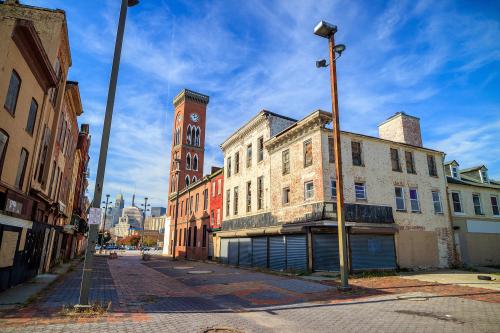Ohio, like most other states in the country and particularly its neighbors in the Great Lakes region, is still reeling from the “Great Recession.” This economic crisis, the worst in a half century, has devastated economies across the globe.
While economists have declared that the recession has abated, it will be a long time before the businesses, households, and government treasuries across the country, and specifically in the state of Ohio, shake off the effects. And when the recession’s grip finally breaks, what will Ohio’s economy and landscape look like?
The choices that Ohio’s people and its leaders make—starting now and continuing over the next few years—will determine that answer. Ohioans can decide whether to shy away from manufacturing after the loss of so many jobs, or to transform the state’s old manufacturing strengths, derived from its role in the auto supply chain, into new products, markets, and opportunities. They can decide to opt out of the national shift to a lower-carbon economy, or to be at the forefront of developing clean coal and renewable energy industries and jobs.
They can choose a workforce system that is aligned to the true metropolitan scale of the economy and oriented to the needs of workers and employers. They can choose transformative transportation networks over more roads; smaller, greener, stronger cities; collaboration and regional cooperation to save money, reduce duplication, and bolster regional competitiveness. And instead of trying to go it alone in the 21st century global marketplace, they can maximize the federal resources on offer to support Ohio’s economic transformation and choose to compete effectively for new federal investments.
This report, Restoring Prosperity: Transforming Ohio’s Communities for the Next Economy, lays out some of the specific policy options that will help Ohioans restore the prosperity that the state enjoyed for much of the 19th and 20th centuries, but that it has been struggling to regain for at least a decade, if not longer.


